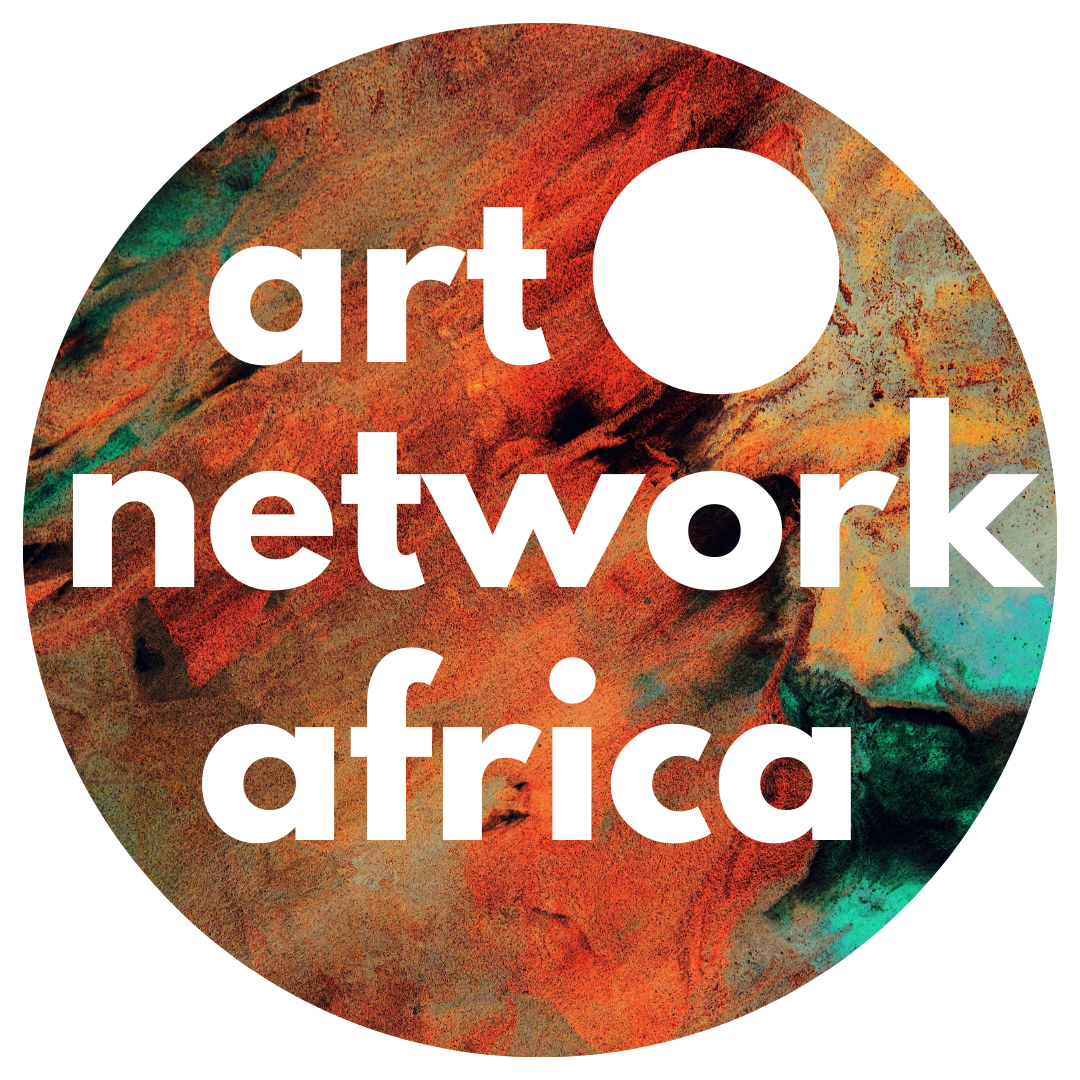When you hear the phrase “Contemporary African Art” what comes to mind? A splash of bold colors? Something political? Maybe a sculptural piece made from old bottle caps? If you’re a bit unsure, you’re not alone. The term “contemporary” can feel a little abstract—especially when it’s paired with something as vast and diverse as African art.
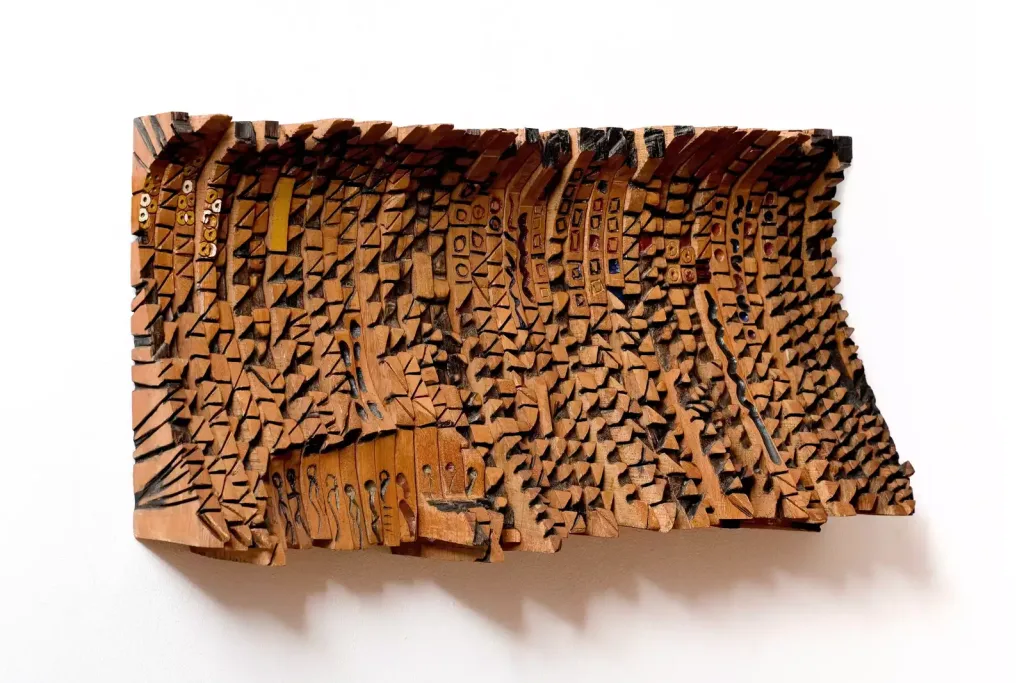
Medium: Tropical Hardwood.
Image courtesy: Artsy
So, let’s break it down together. This guide will help you understand why African art is often referred to as contemporary and what truly makes it contemporary.
What Does Contemporary Even Mean?
In the art world, “contemporary” usually refers to work made from the late 20th century till date but it’s more than just a timeline. Contemporary art is all about now, how artists respond to current ideas, emotions, struggles, and stories. It’s bold, experimental, and often deeply personal.
Now, when we talk about Contemporary African art, we’re talking about African artists creating work that speaks to the present, whether they’re living on the continent or part of the African diaspora. If we are trying to understand the present, it only makes sense to peek into the past.
Traditional African art was often tied to ceremony, spirituality, or daily life like masks, wood carvings or textiles. These pieces weren’t “art for art’s sake”, they had deep cultural functions.
Later, during colonial and post-colonial times, African artists began creating in new ways. They embraced Western mediums like painting and sculpture but kept their own stories alive. This era is what many call “modern African art.”
Then came a wave of artists who broke all the boxes. They blended the old and the new, used unexpected materials, and began tackling issues like identity, displacement, urban life, and even global politics. This is where contemporary African art takes shape.
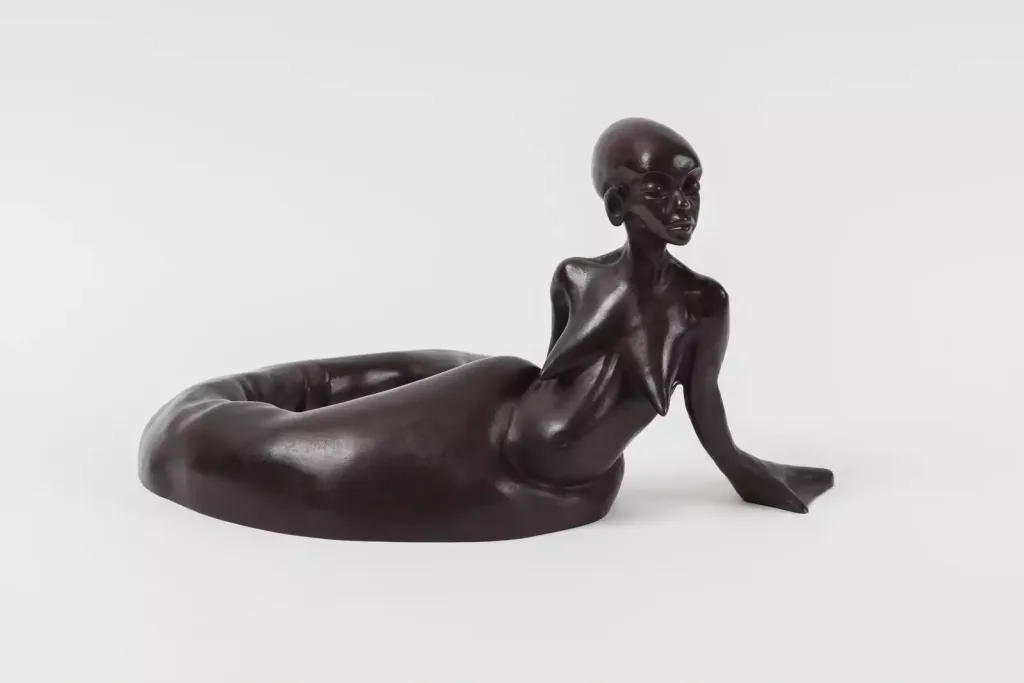
Medium: Bronze.
Image Courtesy: Artsy
What Sets Contemporary African Art Apart?
Here are a few things that make African art truly exciting;
Contemporary African art makes use of all kinds of materials: From photography to video, recycled plastics to digital installations, absolutely nothing is off-limits.
Contemporary African art tells powerful stories: Contemporary African artists talk about everything from colonial history to gender identity, climate change to personal memory.
It’s both local and global: Many artists reference their culture and roots while also engaging in conversations happening all around the world.
It honors tradition but isn’t tied down by it: You’ll see echoes of ancestral practices, but in completely fresh, unexpected forms.
Let’s spotlight a few artists that have shaped and are still shaping the Contemporary African art scene.
Take El Anatsui, for example. Originally from Ghana but with most of his career in Nigeria, his work transforms everyday waste—like discarded bottle caps and aluminum packaging into monumental tapestries that drape across walls like woven metal cloth. But these aren’t just beautiful objects; they tell deeper stories about consumerism, colonial history, and the movement of goods and people across borders. His work feels at once ancient and futuristic, African and global.
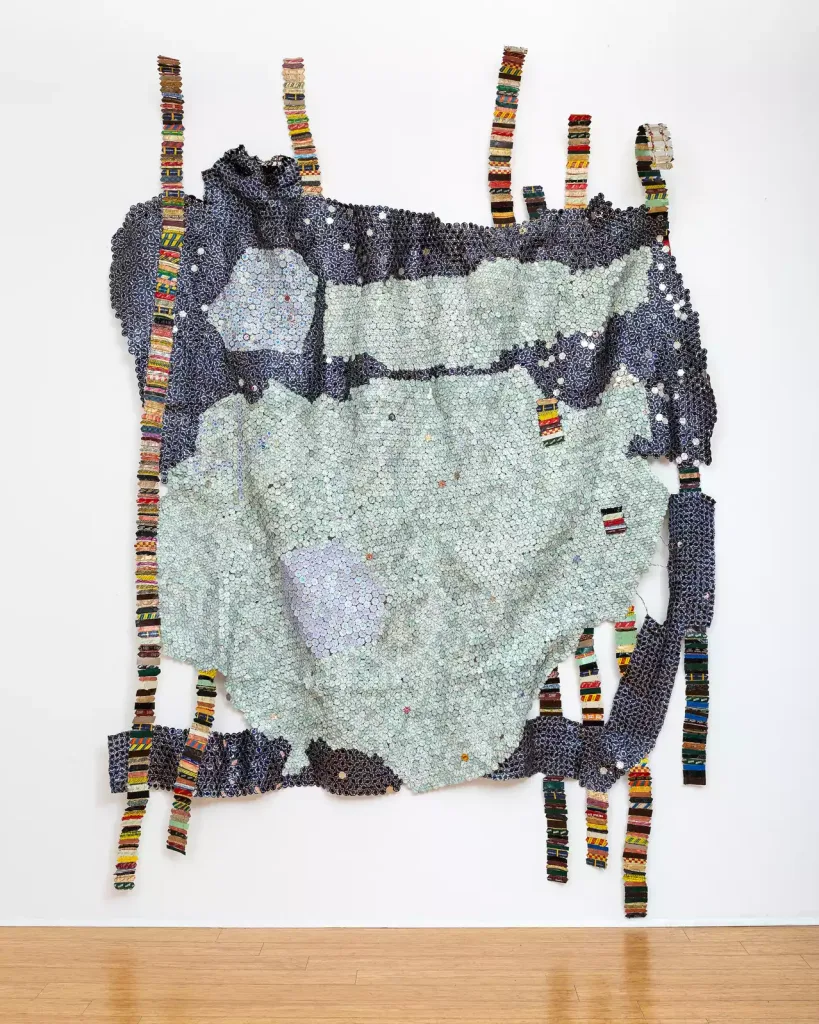
Image Courtesy: Artsy
Then there’s Wangechi Mutu, Kenyan-born artist whose work is hard to forget. She blends collage, sculpture, performance, and film to create dreamlike images, often of hybrid female figures that challenge the viewer’s understanding of beauty, race, and gender. Mutu’s pieces are rich with symbolism and mystery, often touching on mythology and science fiction to explore what it means to be a Black woman navigating multiple worlds.

Image Courtesy: Artsy
Nigerian born Njideka Akunyili Crosby creates layered, intimate paintings that reflect the cultural duality of her own life. Living in the U.S. but deeply connected to her Nigerian roots, her work blends personal family photographs, Nigerian pop culture references, and Western painting techniques. The result? Scenes that feel warm and familiar, yet quietly powerful—reminding us how personal histories and cultural identities are often beautifully complex.
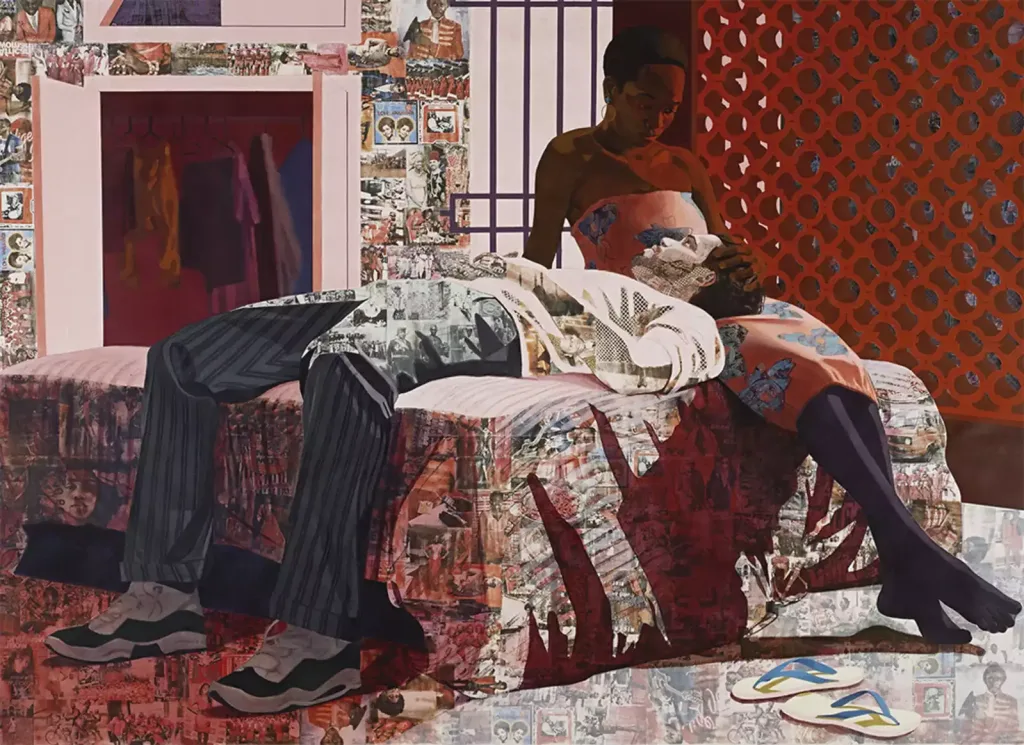
Medium: Acrylic, pastel, charcoal, colored pencil and Xerox transfers on paper.
Image courtesy: Artsy
Ghanaian artist, Ibrahim Mahama brings a completely different kind of energy. His large-scale installations use old jute sacks, once used for transporting cocoa or charcoal, to cover buildings, galleries, or entire public spaces. These sacks carry the marks of labor, trade, and economic struggle. By repurposing them, Mahama invites us to think about the hidden systems behind everyday life in Africa, and how materials carry memory.
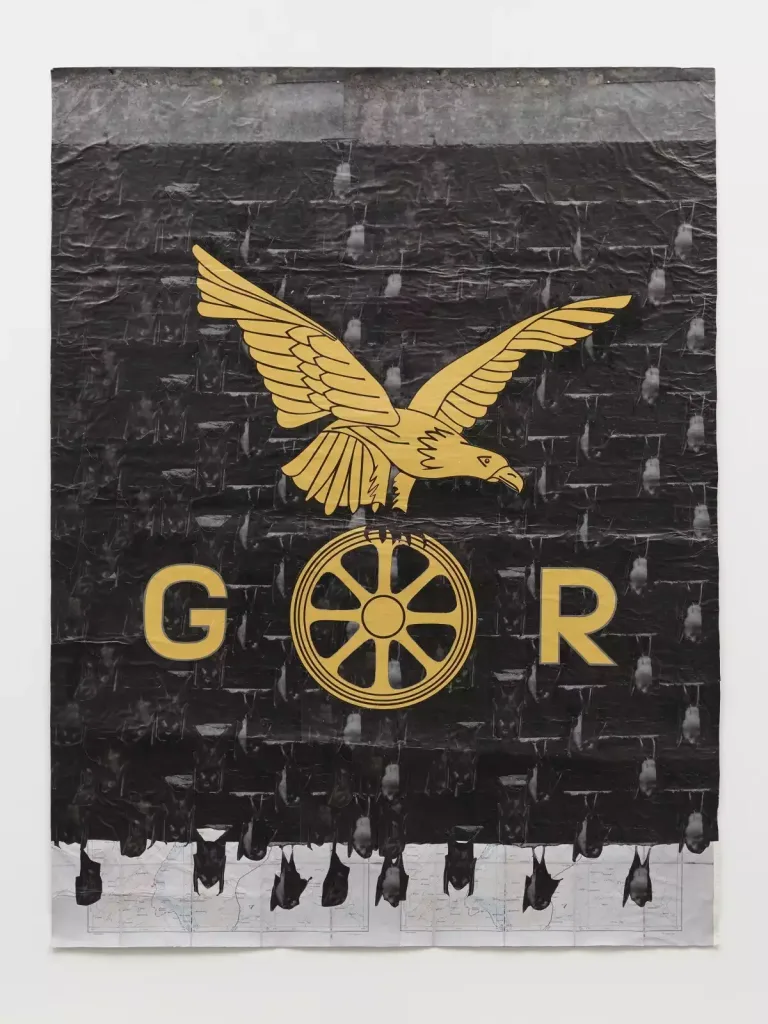
Medium: Litho print and archive paper collage on canvas.
Image courtesy: Artsy
So, in conclusion, Contemporary African art is alive, ever-changing, and full of soul. It’s not bound by tradition, yet it doesn’t ignore it either. It’s bold, thoughtful, and unapologetically authentic. Whether you’re a new collector, a curious observer, or just someone scrolling through your feed, take a moment to dive in. Follow an artist, visit an exhibition, read articles or start a conversation because Contemporary African art isn’t just about what’s being made—it’s about what it says, and who it’s speaking to. And chances are, it’s speaking to you.
